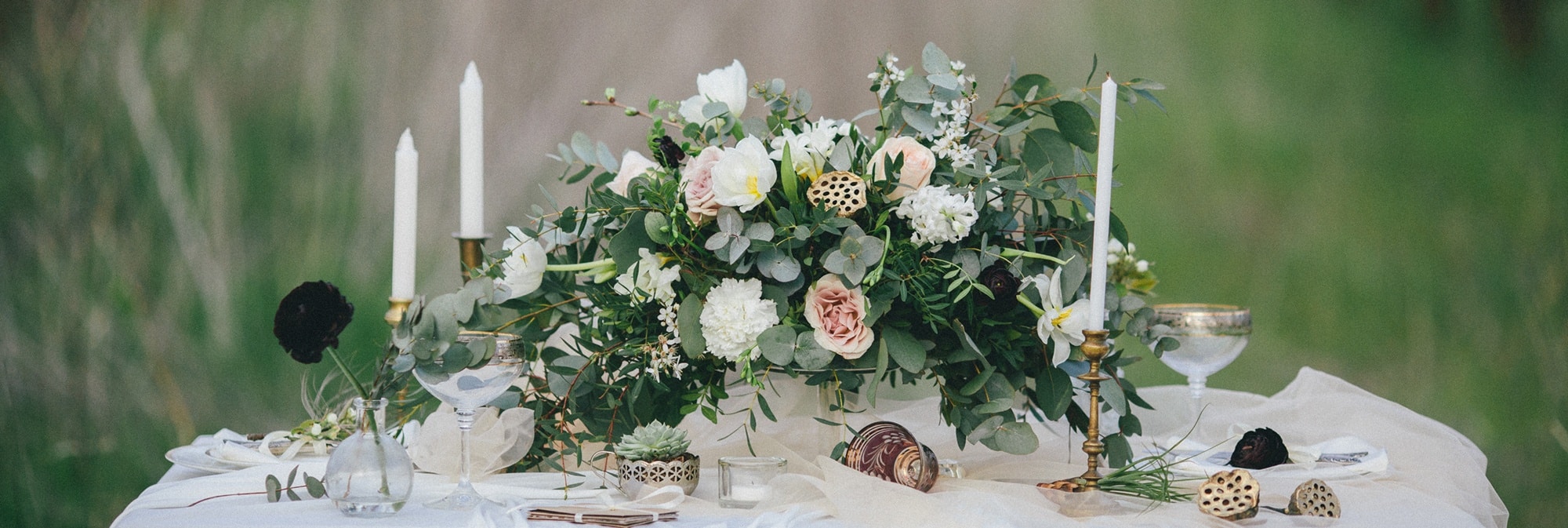A garden wedding … it might be our first archetype. I probably should define that word as it is not common in regular people’s speech. Though it is common among Jungian psychologists—who are not all that “regular.” An archetype was to Jung an eternal image which represents the essential themes of life, death, existence, and eternity. C. S. Lewis frequently referenced archetype ideals in his explanation of myth. He described myth as truth inserted into story. These truths transcend time and culture. The gospel was, to Lewis, the great “myth” that really happened. In other words, it was the true idea which was also true in history.
In the Voyage of the Dawntreader, Lucy reads a page in the Magician’s Book about a story. The story contains archetypal images: “It was about a cup and a sword and a tree and a green hill …” Later she thought of the story … ever since that day what Lucy means by a “good story” is a story that reminds her of the forgotten story in the Magician’s Book. To Christians, the forgotten story in the Magician’s Book and its components are the archetypes of the gospel. Truth of eternity found in everyday images, experiences, details and objects. They themselves are not eternal. They point us in the direction of the infinite. The themes of the cross are bigger than the event and story itself. Archetypes are eternal, or close to it.
Now, back to gardens and weddings. Gardens and weddings are frequent in the biblical text. I would like to remind you of three weddings. Two of which might surprise you. he common link is that they all occur in gardens.
The first won’t be a surprise. Adam and Eve were joined in A Garden. With God linking marriage and gardening, we can learn a bit about both. Gardens are where life thrives. Beauty of flora and fauna is found within the walls of a garden. The diversity of plant and animal each created and placed in relationship to the other so for all to thrive and none to conquer, dominate or perish. In the Edenic garden such beauty is natural. For us, tossed from the garden, we can only imitate the natural beauty of the garden. We have weeds. And plants and animals die. But recreate we do. The garden is the context which we generate the to imitate—but never produce—the original beauty of Eden.
Enter marriage. We are imitators of the great garden scene. Though we cannot recreate the beauty and perfection of the original garden—both the physical garden and the relational one—we aspire to something beautiful because we are indeed made in the image of a creator of THE GARDEN, and who exists IN relationship. This first marriage tells us to which we aspire and what went wrong. Literally, The Garden is closed. The relational garden also took a dive.
The second Garden mentioned here occurred on Easter weekend, at the death and resurrection of Jesus. We have listened to many sermons on the sayings of Jesus. Beautiful among those sayings was the message to the thief. “Today you will be with me in Paradise. We think Jesus said, in essence—you are going to heaven with me! He was, but his word choice is powerful. Paradaiso is the Greek word for … Garden! Jesus was saying, “Today, we are going back to the Garden, me and you!” Two days later the garden image returns. Mary and other women went to the tomb. In her distraught state, she encounters Jesus who she didn’t recognize. The text says that she mistakenly assumed that Jesus was … the Gardener. In a way, she was right! She met the Keeper of the Garden. Not just the gardener but the creator of Gardens.
The third marriage and garden scene is in The Revelation … at the end of the story. It’s the narrative of the “Great Wedding”! The wedding scene is where Jesus, the groom, takes a bride—US, the Church. The paradise story, where Mary met the Gardner, is like the proposal. The betrothal is made in the Gospels, and the Wedding occurs in The Revelation. Oh, by the way, it occurs in a garden … “Then the angel showed me the river of the water of life, as clear as crystal, flowing from the throne of God and of the Lamb down the middle of the great street of the city. On each side of the river stood the tree of life, bearing twelve crops of fruit, yielding its fruit every month. And the leaves of the tree are for the healing of the nations. No longer will there be any curse… .” (22:1-3)
And in the Garden occurred a wedding, “I saw the Holy City, the new Jerusalem, coming down out of heaven from God, prepared as a bride beautifully dressed for her husband. And I heard a loud voice from the throne saying, “Look! God’s dwelling place is now among the people, and he will dwell with them. They will be his people, and God himself will be with them and be their God. ‘He will wipe every tear from their eyes. There will be no more death’[b] or mourning or crying or pain, for the old order of things has passed away.” He who was seated on the throne said, “I am making everything new!” Then he said, “Write this down, for these words are trustworthy and true.” (Revelation 21:2-5)
Until that day, we are married in fields vulnerable to draught, where little of anything will grow, or areas with such overgrowth all beauty is overgrown with chaos and disorder. This is our space to create gardens as we live in the image of the great Gardner. While we long for the day of the marriage restored and the new Garden is opened again, until that day there is before us is the task of garden creation—in my backyard and in my living room.





